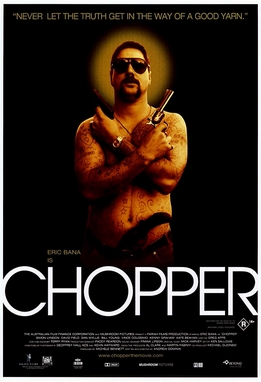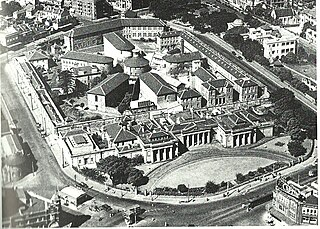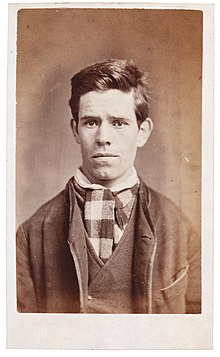
Bushrangers were originally escaped convicts in the early years of the British settlement of Australia who used the bush as a refuge to hide from the authorities. By the 1820s, the term had evolved to refer to those who took up "robbery under arms" as a way of life, using the bush as their base.

Thunderbolt is a 1910 film in the genre of "outlaw" films at the time that tended to glorify the life of the outlaw "Bushrangers" that roamed the Australian outback in pre-commonwealth days. Shortly after this film was made, the government of New South Wales banned the manufacture of this type of film on the basis that they were promoting crime.

Edward Kelly was an Australian bushranger, outlaw, gang leader and convicted police-murderer. One of the last bushrangers, he is known for wearing a suit of bulletproof armour during his final shootout with the police.

Frederick Wordsworth Ward, better known by the self-styled pseudonym of Captain Thunderbolt, was an Australian bushranger renowned for escaping from Cockatoo Island, and also for his reputation as the "gentleman bushranger" and his lengthy survival, being the longest-roaming bushranger in Australian history.

Chopper is a 2000 Australian crime drama film written and directed by Andrew Dominik, in his feature directorial debut, based on the autobiographical books by criminal turned author Mark "Chopper" Read. The film stars Eric Bana as the title character and co-stars Vince Colosimo, Simon Lyndon, Kate Beahan and David Field. The film follows Read's life and time in prison. The film grossed $3.9 million worldwide and received positive reviews. It has since garnered a cult following.

Gundagai is a town in New South Wales, Australia. Although a small town, Gundagai is a popular topic for writers and has become a representative icon of a typical Australian country town. Located along the Murrumbidgee River and Muniong, Honeysuckle, Kimo, Mooney Mooney, Murrumbidgee and Tumut mountain ranges, Gundagai is 390 kilometres (240 mi) south-west of Sydney. Until 2016, Gundagai was the administrative centre of Gundagai Shire local government area. In the 2021 census, the population of Gundagai was 2,057.

HM Prison Pentridge was an Australian prison that was first established in 1851 in Coburg, Victoria. The first prisoners arrived in 1851. The prison officially closed on 1 May 1997.

The Darlinghurst Gaol is a former Australian prison located in Darlinghurst, New South Wales. The site is bordered by Darlinghurst Road, Burton and Forbes streets, with entrances on Forbes and Burton Streets. The heritage-listed building, predominantly designed by New South Wales Colonial Architect Mortimer Lewis, was closed in 1914 and has subsequently been repurposed to house the National Art School.

Henry Johnson, better known by his alias Harry Power, was an Irish-born convict who became a bushranger in Australia. From 1869 to 1870, he was accompanied by a young Ned Kelly, who went on to become Australia's best known bushranger.
The following lists events that happened during 1880 in Australia.

Andrew George Scott, also known as Captain Moonlite, though also referred to as Alexander Charles Scott and Captain Moonlight, was an Irish-born New Zealand immigrant to the Colony of Victoria, a bushranger there and in the Colony of New South Wales, and an eventual and current day Australian folk figure.

John Donahue, also spelled Donohoe, and known as Jack Donahue and Bold Jack Donahue, was an Irish-born bushranger in Australia between 1825 and 1830. He became part of the notorious "Wild Colonial Boys".
The following lists events that happened during 1879 in Australia.

Patrick Daley, known informally as 'Patsy' Daley, was a 19th-century Australian bushranger. Daley was the younger cousin of John O’Meally, a member of Frank Gardiner’s gang of bushrangers who robbed the gold escort near Eugowra in June 1862. By early 1863 Patsy Daley had joined with O’Meally and Ben Hall in a series of robberies carried out in the Young district. Daley was captured in March 1863 and sentenced to fifteen years hard labour. He was released in 1873. Daley married and settled in the Cobar district, becoming a successful businessman and hotel-owner.
The Bathurst rebellion of 1830 was an outbreak of bushranging near Bathurst in the British penal colony of New South Wales.
Frank Pearson was an Australian bushranger, operating under the pseudonym Captain Starlight.

Moonlite is a 1910 bushranger film about Captain Moonlite, played by John Gavin, who also directed. It was also known as Captain Moonlite and is considered a lost film.
The Gardiner–Hall Gang was an informal group of bushrangers who roamed the central west of New South Wales, Australia in the 1860s. Named after leaders Frank Gardiner and Ben Hall, the gang was responsible for the largest gold robbery in Australia’s history at Eugowra Rocks. The gang had its origins in 1861; its demise came with the execution of John Dunn in 1866.

Lawrence Cummins, known informally as Larry Cummins, was a bushranger who operated primarily in the districts surrounding the Abercrombie River. In July 1863 he participated in the Mudgee mail robbery led by Fred Lowry and John Foley. Soon afterwards Cummins and his younger brother John carried out several robberies. They were identified and John Cummins was apprehended; he was accidentally shot and killed while being escorted by police constables. Three weeks later Cummins was captured with his associate Lowry, in an encounter with the police which resulted in Lowry’s death. Cummins was sent to Berrima Gaol in late 1863, from where he escaped in November 1866 with another prisoner. From December 1866 to April 1867 Cummins carried out a series of audacious robberies. In April, during an attempted robbery of Webb's store on the Fish River in company with John Foran, he received a wound in the face from birdshot. He was captured soon afterwards and sentenced to thirty years hard labour and sent back to Berrima Gaol.
John Francis Peggotty was an Irish bushranger in Australia also known as the "Birdman of the Coorong". He reputedly rode an ostrich and wore large amounts of gold jewellery while committing his crimes, though some claim that the story is a fabrication.














